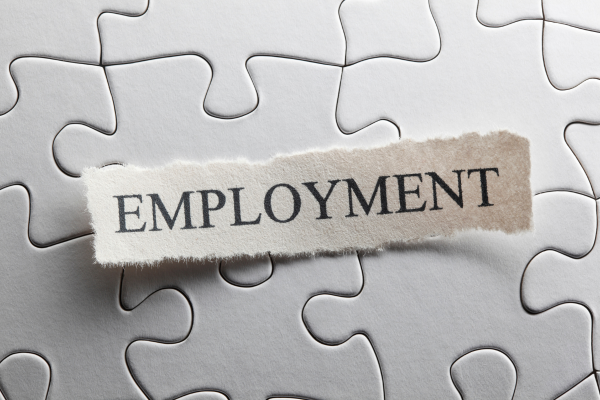News
The Coronavirus Job Retention Scheme or Furlough – A Summary
All You Need to Know About the Coronavirus Job Retention Scheme
The Chancellor’s announcement of the Coronavirus Job Retention Scheme (‘the Scheme’) on 20th March 2020 (yes, it really was only 2 weeks ago!) created for the first time in UK Employment Law the concept of ‘furlough’ which means a temporary leave of employees due to special needs.
The Scheme is intended to enable employers to designate all or some of their employees as ‘furloughed employees’ and claim a grant from HM Revenue and Customs (HMRC) of up to 80% of each furloughed employee’s salary, subject to a cap of £2,500 per month, plus the associated employer National Insurance contributions, and minimum automatic enrolment employer pension contributions on that amount.
After a somewhat frustrating wait for further details behind what is a very welcome scheme in these current uncertain times we now do have some more flesh to be added to the bones, although inevitably further details are still required.
This summary is designed to provide answers to the most frequently asked questions I have encountered over the past two weeks. If you still have queries please contact me via email on crw@deanwilson.co.uk or telephone on 01273 249277.
Who is eligible to participate in the Coronavirus Job Retention Scheme?
Employers – the Scheme is open to all UK employers provided that they had a PAYE payroll scheme on or before 28th February 2020 and they have a UK bank account. This therefore includes all business, charities, recruitment agencies and public authorities, although there is specific guidance around public and private sector organisations which receive and will continue to receive public funding for their staff costs.
Employees – those who were on the employer’s payroll on or before 28th February 2020 will be eligible. This will include full time employees, part time employees, employees on flexible or zero hours contracts and those employed by agencies who are not working.
Any employee who has been made redundant as a result of coronavirus since 28th February 2020 can be rehired and placed on furlough. Also those who voluntarily resigned and were working a period of notice on or after 28th February can be rehired and placed on furlough, although there is no obligation on an employer to do so.
An employee who is working reduced hours is not eligible to be placed on furlough which is predicated on the furloughed employee undertaking no work for the employer at all during the period of furlough. If there is reduced work available then an employer may have to negotiate a reduced salary with the employee but will not be able to claim the grant from HM Revenue and Customs.
Employees who commenced work after 28th February are not eligible to participate in the Scheme.
What can be claimed?
The Scheme makes it clear that the employer must, as a minimum, pay each furloughed employee 80% of their normal salary or £2,500 gross per month, whichever is the lower. The employer can then claim a grant from HMRC in respect of the payment made to the furloughed employee, the Employer’s National Insurance contributions and statutory employer’s pension contributions.
Employers should base their calculation of the 80% of salary which can be reclaimed on the actual salary paid to the furloughed employee before tax as at 28th February 2020. Commission, fees and bonuses are not included.
If an employee’s salary varies (for example because they are a zero hours worker) their salary calculation is based on the higher of the wages which they received for the same month in 2019 or an average of the salary paid to them in the 2019/20 tax year. If an employee has been employed for less than 12 months their calculation will be based on the average monthly salary since employment commenced.
It is open to an employer to top up the payments received from HMRC to either normal salary or something less than normal salary, although there is no obligation on them to do so.
How do you place an employee on furlough leave?
Even in these extraordinary times contractual and statutory employment rights continue to apply. Therefore unless employers have the contractual right to lay employees off as a result of a reduction in available work it is necessary for the employee to agree to accept a reduced salary during the period of furlough. That agreement must be evidenced in writing – although an exchange of emails will suffice.
Where an employer is making a decision who to place on furlough leave and who should remain at work it should bear in mind that usual discrimination protections will apply and therefore ensure that all decisions taken are objective and non discriminatory. It may be helpful for an employer to keep a record of its decision making process and the reasons behind it in relation to who to place on furlough.
The appropriate course of action would seem to be to discuss the situation with the employee, either in a meeting or telephone call, seek their agreement to being placed on furlough and then confirm that agreement in writing.
An employee can refuse to be placed on furlough or to receive a reduced salary. Given that the alternative may well be a redundancy dismissal and the widespread acknowledgement that these are exceptional circumstances it is perhaps unlikely that there will be significant push back from employees.
An employee can request to be placed on furlough but there is no obligation on the employer to agree to that request. This is a decision which the employer takes.
Do the collective consultation obligations apply?
Under the Trade Union and Labour Relations (Consolidation) Act 1992 an employer who is proposing to dismiss as redundant 20 or more employees from a single establishment within a 90 day period must undertake a period of collective consultation with recognised trade unions or elected employee representatives. Where between 20 and 99 redundancies are proposed within a 90 day period that consultation should take place a minimum of 30 days before the first dismissal takes effect and where 100 or more redundancies are proposed the consultation period is 45 days.
Although a full blown consultation process is unlikely to be possible in the current situation it is likely that employers proposing to place 20 or more employees on furlough with the alternative being redundancy dismissals, should be taking some steps towards compliance.
Can someone who is away from work be placed on furlough?
If an employee is sick or is self isolating they are entitled to be paid SSP from day 1 of their absence and small and medium sized employers can reclaim up to 14 days SSP from HMRC. An employee in receipt of SSP cannot be placed on furlough leave but once the period of sickness or self isolation comes to an end they can then be furloughed in the manner described above.
If an employee has been advised by Public Health England to ‘shield’ by remaining at home for 12 weeks, they will be eligible to be placed on furlough during the period of shielding.
If an employee is on maternity or some other statutory leave they can continue to take that leave and receive the statutory payments in the normal way. However an employee can also give notice of their intention to return to work early (or merely return due to the expiry of their leave period) and will then be eligible to be placed on furlough leave. If an employer offers enhanced, earnings related contractual pay to employees on maternity or other statutory leave that enhancement is included as wage costs which can be claimed through the Scheme.
What can an employee do during furlough leave?
It is clear from the guidance that no work can be undertaken by a furloughed employee on behalf of the employer. This includes providing services or generating income. Therefore an employee working reduced hours cannot be the subject of a claim for a grant from HMRC.
Furloughed employees can carry out voluntary work (for example for the NHS) or undertake training for the employer as long as that does not constitute the provision of services or generation of income for the employer.
How long does furlough last?
We know that the Scheme is currently open for 3 months from 1st March although it has been indicated that it will be extended if necessary.
The minimum period that an employee can be placed on furlough for is 3 weeks. It appears that it will be possible to rotate employees on furlough, provided that each period of furlough lasts for a minimum of 3 weeks.
How will employers claim the money?
HMRC are in the process of designing a web portal into which employers will enter the details of their furloughed employees including the amount claimed in respect of each employee.
HMRC say that in order to submit a claim employers will need:
- Their ePAYE reference number
- The number of employees being furloughed
- The claim period (start and end date)
- The amount being claimed, which the employer will need to have calculated
- Their bank account number and sort code
- A contact name and telephone number.
Upon receipt of a claim through the portal HMRC will make payments into the employer’s designated bank account via BACS. We are told that further guidance on how to calculate the claims for Employers National Insurance and pension contributions will be provided before the Scheme goes live.
Employers will be able to make one claim every three weeks
HMRC say that they intend the scheme to be up and running by late April. It is currently unclear whether this means the portal or receipt of the payments by employers. It would appear that employers are expected to pay employees in accordance with usual pay dates and then reclaim the monies from HMRC. This is likely to cause cashflow issues for many employers and the Government are pointing to the various grants and loan schemes available through banks to cover this period.
HMRC are making it clear that they have the right to retrospectively audit all aspects of claims in order to ensure compliance with the rules of the Scheme.
Do tax and national insurance have to be deducted from the money paid to the employee?
Yes. It is clear from the guidance that all usual deductions must be made – so PAYE income tax, employees National Insurance contributions and pension contributions. The level of the contributions will be calculated on the lesser salary being paid and will therefore be lower than usual.
What about an employee who is usually paid at or only just above National Minimum Wage levels?
If 80% of normal salary would take an employee under NMW levels as they will not be working during furlough there will be no breach of the National Minimum Wage if they are paid below that level during furlough. The only exception to that situation is where an employee attends training whilst on furlough. In respect of that period of training they must be paid at least National Minimum Wage. Please remember that National Minimum Wage levels increase on 6th April 2020.
Do employees continue to accrue holiday entitlement during periods of furlough leave?
There is currently no guidance from the Government on the interaction between furlough and holiday.
It appears highly likely that as an employee remains an employee even during a period of furlough they will continue to accrue holiday entitlement in the normal way during that time. This is analogous to time spent on sabbatical leave.
The Government has passed emergency legislation amending the Working Time Regulations in order to enable up to 4 weeks holiday to be carried forward into the next 2 holiday years if necessary in order to avoid employers being hit with mass holiday requests when employees are able to return to work.
What is currently not clear, and is dividing commentators, is whether employees can take holiday during periods of furlough without bringing it to an end and, if so, what payment the employee is entitled to. Is it the 80% of normal salary subject to the £2,500 per month cap, or is it normal pay as in pre furlough pay, including overtime and commission etc? Further guidance is urgently needed in this area.
This is a very fast moving area. I will endeavour to update this document as and when more details are received. If, in the meantime you have specific queries please contact me using the contact details at the start of this article.



